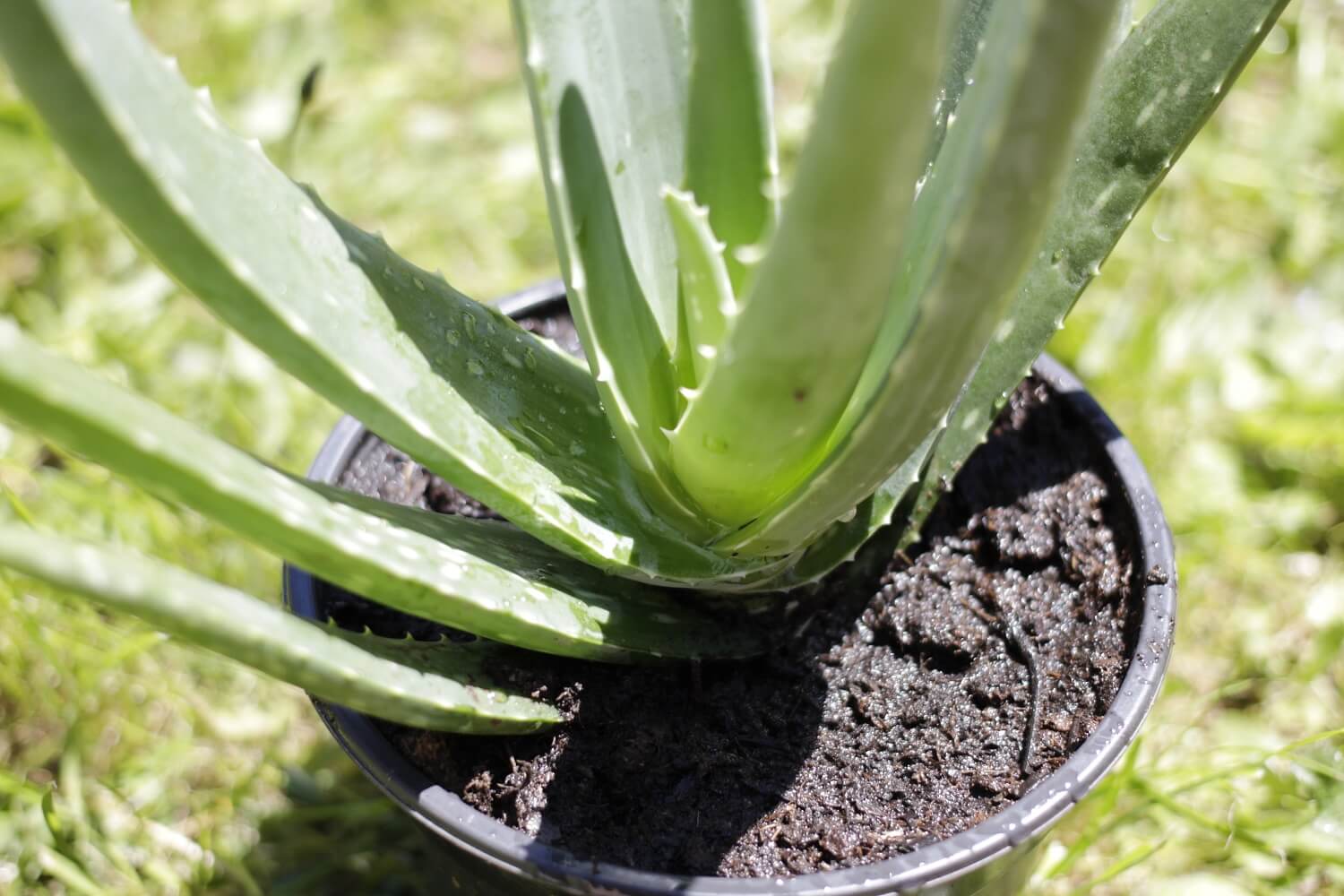
Fertilize aloe vera correctly
In this article you will learn how often, how much and with which fertilizer an aloe vera is fertilized.

In this article you will learn how often, how much and with which fertilizer an aloe vera is fertilized.
So as not to keep you too long, here is a quick overview of how to fertilize an aloe.
DieAloe Veracan every 2 weeks be supplied with fertilizer. If the plant has recently been repotted, you should fertilize the plant less as the the new soil often contains nutrients. You should also Observe the current season . You can find out more in this article.
As aloe vera is a succulent plant, it can be grown with Cacti or succulent fertilizers are supplied with nutrients. If you want to use the leaves of aloe vera for cosmetic or culinary purposes, you should use pure aloe vera leaves. organic fertilizer use. Otherwise chemical residues may remain in the leaves the leaves and thus in the juice and pulp of the aloe vera.
The amount of fertilizer you need for aAloe Verayou can use from the packaging of the respective fertilizer . Be aware that it is essential it is better to fertilize the plant too little than too much . Too much fertilizer hinders the growth of the plant and makes the fleshy leaves leaves turn mushy and brown.
The true aloe ( aloe vera ) is a succulent and therefore accustomed to sandy, nutrient-poor soil. For this reason, it requires little fertilizer in houseplants, it needs little fertilizer. It has proven to be a good idea to feed the aloe vera evenly with a small amount of liquid fertilizer, as this means that less water has to be water needs to be poured to distribute the nutrients evenly in the plant's substrate. If you are interested in how to water aloe vera correctly you can find out more about this topic in the following article:
Aloe vera has a growth phase and a dormant phase every year. Here you can find out when these are and how you should fertilize during these periods.
The annual growth phase of aloe vera begins in spring. During this period (around the beginning to middle of March) you can start to slowly add some fertilizer to the plant. some fertilizer to the plant. We recommend a quarter to a maximum of half of the fertilizer concentration on the packaging.
In summer, you can fertilize the aloe vera 1-2 times a month. Here it is in the growth phase and can absorb and process the nutrients.
In autumn, you should reduce fertilization again to prevent too high a concentration of nutrients in your plant's soil. It is best to fertilize only once a month at most.
During the dormant phase, which takes place in the winter months, you should not fertilize the aloe vera, as it needs no or only very few nutrients. It needs very few nutrients and therefore the concentration in the substrate increases with continuous fertilization and the excessive fertilizer concentration harms the plant.
It is not always easy to tell whether an aloe vera plant has been over-fertilized. However, you can usually tell by the fact that the new shoots of the plant grow very quickly but do not develop fleshy leaves.
In addition to liquid fertilizer, you also have other options for supplying the plant with additional nutrients.
These are small sticks that you insert into the soil of the plant. Watering releases the nutrients and distributes them in the plant's soil.
Advantages:
You only need to insert the stick into the soil once a year and it will release nutrients evenly to the plant in small amounts for a long time.
Disadvantages:
The fertilizer concentration is difficult to control and the nutrients may not be evenly distributed in the substrate.
These are powders or grains that are added to the soil of the plant.
Advantages:
The fertilizer dissolves with the irrigation water and is slowly distributed in the soil.
Disadvantages:
The fertilizer concentration is difficult to control and depends on the amount of water poured. There is also a risk that the fertilizer will be dissolved at an inappropriate time.
We hope we have been able to answer your questions and help you with this article.
If you would also like to help us, please leave a review or take a look at our Pinterest account. There are always great DIY instructions on the subject of plants.
